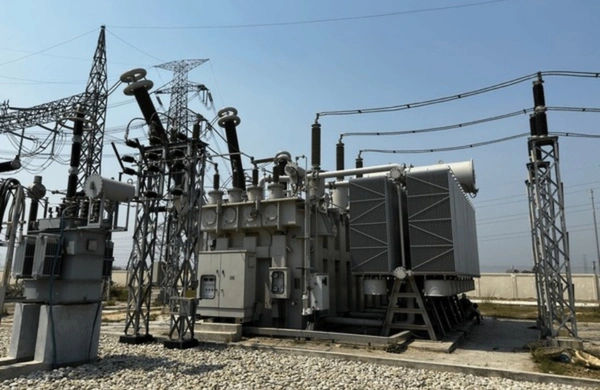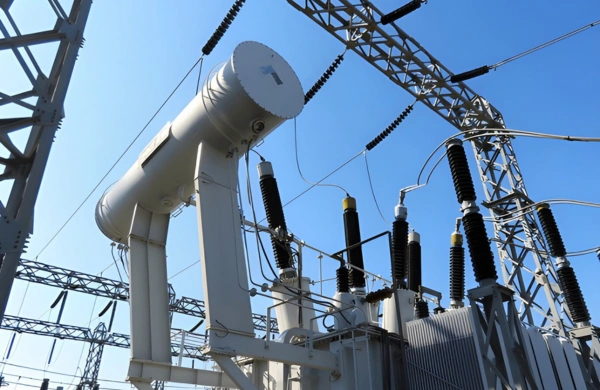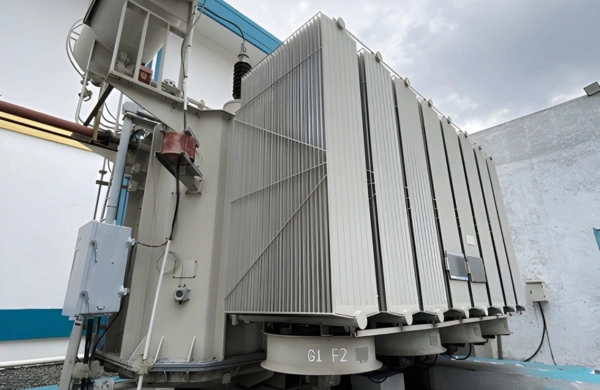Introduction
Modern power networks and industrial systems require flexibility in voltage transformation to accommodate both transmission and utilization requirements. Step up-down transformers offer a versatile solution — capable of either increasing or reducing voltage levels based on application need. These dual-function transformers enable efficient power transfer between systems operating at different voltages, supporting utilities, industrial plants, and renewable energy networks.
Zetwerk designs and manufactures precision-engineered step up and step down transformers optimized for reliability, thermal performance, and electrical safety. Built to IEC, IEEE, and ANSI standards, Zetwerk’s transformers provide dependable voltage conversion for North American industries where grid compatibility, equipment protection, and system efficiency are paramount.
Know About Custom Step Up-Down Transformers for
Flexible Power Distribution
1. The Function and Versatility of Step Up-Down Transformers
A step up-down transformer can perform both voltage increase (step-up) and reduction (step-down) functions, depending on how the primary and secondary windings are connected. This versatility allows a single unit to be used in applications requiring bidirectional voltage transformation.
Key roles include:
- Transmission interface: Stepping voltage up for efficient long-distance transmission, or stepping it down for local distribution.
- Industrial integration: Adapting equipment designed for different voltage standards.
- Testing and calibration setups: Allowing engineers to switch between voltage modes for product evaluation.
- Renewable and microgrid systems: Balancing generation and load voltages dynamically.
Zetwerk’s step up-down transformers are built with precision-wound coils and robust insulation systems to ensure accurate voltage ratios, minimal losses, and reliable bidirectional performance.
2. Construction and Design Features
Step up-down transformers require precise engineering to perform efficiently in both transformation modes. Zetwerk focuses on optimal material selection, winding geometry, and thermal design.
Core:
Manufactured from cold-rolled grain-oriented (CRGO) silicon steel laminations or amorphous metal, providing high magnetic permeability and reduced core losses.
Windings:
Copper or aluminum windings are layered and insulated to minimize leakage flux. Separate high-voltage and low-voltage windings allow flexible configuration for both step-up and step-down operation.
Insulation:
Zetwerk uses high-dielectric materials such as Nomex, epoxy resin, or paper-oil insulation to withstand thermal and electrical stress.
Enclosure:
Robust IP-rated enclosures designed for indoor or outdoor applications, with options for stainless steel or powder-coated mild steel housing.
Cooling Systems:
Depending on power rating and environment, transformers are designed for:
- AN (Air Natural) cooling for low-capacity indoor units.
- AF (Air Forced) for compact high-load installations.
- ONAN / ONAF oil-cooled systems for industrial and utility-grade units.
Each design is validated through simulation and testing for optimal heat dissipation and mechanical stability under load.
3. Electrical and Performance Characteristics
Zetwerk’s step up-down transformers are engineered for maximum efficiency, reliability, and safety in continuous operation.
Typical specifications:
- Voltage range: 415 V to 33 kV (custom higher voltages available).
- Frequency: 50 Hz or 60 Hz.
- Efficiency: Above 98.5% at full load.
- Voltage regulation: ±1.5% typical.
- Insulation class: Class F or H.
- Cooling type: Air or oil-cooled.
- Duty cycle: Continuous (24/7 rated).
Each transformer undergoes:
- Turns ratio and polarity verification.
- No-load and load loss testing.
- Impedance measurement.
- Dielectric and impulse voltage testing.
- Thermal endurance evaluation.
All tests comply with IEC 60076, IEEE C57.12, and ANSI transformer standards.
4. Step Up vs. Step Down Operation Explained
The same transformer can be used for both voltage step-up and step-down operations by interchanging the primary and secondary connections.
- Step-Up Mode:
Converts lower input voltage to higher output voltage — typically used at generation sites or in renewable energy integration to feed transmission systems. - Step-Down Mode:
Converts higher voltage from transmission lines into lower levels suitable for industrial or commercial equipment.
Zetwerk ensures that each transformer maintains voltage ratio accuracy, phase integrity, and insulation safety regardless of configuration, ensuring long-term reliability in either operating direction.
5. Industrial and Utility Applications
Step up-down transformers are widely used across sectors that demand flexible voltage control and reliable power transfer.
Applications include:
- Industrial plants: Connecting imported equipment with non-standard voltage requirements.
- Test facilities: Providing adjustable voltage for electrical testing and calibration systems.
- Renewable power systems: Interfacing solar farms or wind turbines with distribution grids.
- Backup and UPS systems: Bidirectional energy conversion for power continuity.
- Mining and construction: Voltage adaptation for portable or remote power systems.
- Substations: Serving as auxiliary or emergency transformers in grid operations.
Zetwerk designs application-specific transformers with precision tap settings, optimized impedance, and overload tolerance to meet the electrical demands of each sector.
6. Dry-Type and Oil-Immersed Configurations
Zetwerk manufactures both dry-type and oil-immersed transformers, each suited for distinct operating environments.
Dry-Type (Cast Resin or VPI):
- Ideal for indoor, enclosed, or environmentally controlled locations.
- Maintenance-free and flame-resistant.
- Low noise and high dielectric reliability.
Oil-Immersed:
- Designed for outdoor or high-capacity industrial installations.
- Superior cooling and overload performance.
- Long service life with periodic oil filtration maintenance.
Zetwerk engineers help customers select the most appropriate configuration based on installation site, duty cycle, and environmental exposure.
7. Safety, Reliability, and Compliance
Safety is fundamental to transformer performance, especially in systems where voltage conversion can occur bidirectionally. Zetwerk ensures all transformers meet stringent international safety and insulation standards.
Safety features include:
- Electrostatic shielding: Reduces electrical noise between windings.
- Thermal sensors: Continuous monitoring to prevent overheating.
- Grounding terminals: Ensures operator and system protection.
- Pressure relief devices (for oil units): Prevents tank rupture during faults.
- Fire-resistant insulation materials: Ensures compliance with UL and IEC safety norms.
Zetwerk’s transformers are tested for dielectric withstand, partial discharge, and temperature endurance, ensuring stable and safe operation over decades of service.
8. Manufacturing and Quality Assurance
Zetwerk’s integrated manufacturing ecosystem combines precision engineering, material control, and automated testing to deliver consistent quality.
Manufacturing process highlights:
- Core cutting and stacking: CNC-controlled precision laminations for low losses.
- Automated winding machines: Maintain accurate conductor tension and turn ratio.
- Vacuum impregnation: Enhances insulation and moisture resistance.
- Oil treatment and filtration: For high dielectric strength in immersed units.
- FAT (Factory Acceptance Testing): Verifies performance under simulated operating conditions.
All manufacturing and QA processes are ISO 9001 and ISO 14001 certified, ensuring traceability and compliance with North American quality expectations.
9. Zetwerk’s Custom Engineering Capabilities
Zetwerk collaborates with OEMs, EPC contractors, and utilities to develop customized step up-down transformers for unique system requirements.
Capabilities include:
- Custom voltage ratios and multiple secondary windings.
- Multi-tap and on-load tap changer (OLTC) configurations.
- Compact footprint for constrained installations.
- 3D thermal and magnetic simulations for optimized efficiency.
- North America export documentation and packaging compliance (UL, CSA).
Through advanced design tools and flexible manufacturing, Zetwerk ensures every transformer aligns with project-specific operational, mechanical, and safety needs.
Conclusion
Step up-down transformers offer essential flexibility in modern electrical systems, bridging the gap between high-voltage transmission and end-user applications. They ensure reliable, efficient, and reversible voltage transformation that supports grid stability and industrial productivity.
Zetwerk manufactures high-performance step up-down transformers designed for long-term dependability, low maintenance, and superior electrical safety. Built to international standards and validated through comprehensive testing, Zetwerk’s transformers are engineered to meet the demanding needs of North American industrial and utility projects.




With full in-house manufacturing, rigorous QA control, and advanced engineering support, Zetwerk remains a trusted partner for delivering efficient, flexible, and high-quality transformer solutions.
FAQs
a. It’s a dual-function transformer that can increase or decrease voltage depending on connection configuration.
a. Zetwerk offers transformers from 415 V to 33 kV, customizable for project-specific ratios.
a. Yes. Zetwerk manufactures both configurations for indoor and outdoor environments.
a. Each undergoes ratio, dielectric, load loss, impulse, and temperature rise testing.
a. Yes. All units comply with IEC, IEEE, ANSI, and CSA standards for North American operation.








